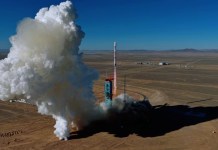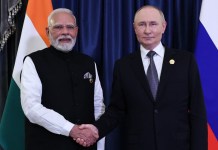Iran is reportedly keen to acquire China’s J-10 fighter jet and not going ahead with powerful Russian jets. However, one may be left wondering why Iran didn’t show interest in the Sino-Pakistani JF-17 Thunder and how it stacks up against the J-10C.
While the exact reason for Tehran’s preference for the Chinese fighter over the Russian ones remains unknown, Russian aviation portal Avia.Pro quoted experts as saying say that it may depend on the costs involved and type of fighter aircraft.
The Russian fighters are twin-engine heavy variants compared to the Chinese single-engine advanced lightweight multirole fighter jet, the J-10.
Nevertheless, one may be left wondering why Iran didn’t show interest in the Sino-Pakistani JF-17 Thunder and how it stacks up against the J-10C.
While the JF-17 and the J-10 are unlikely to see any confrontation in the future, it should be interesting to know as to why even the PLA Air Force isn’t using the Sino-Pakistani jet – the JF-17?
The JF-17 Thunder
In 1989, US aerospace firm Grumman and China were about to develop Super-7 aircraft, an upgraded and redesigned Chengdu F-7. But the project got canceled due to a sudden change in bilateral ties between the US and China.
In 1999, China and Pakistan signed an agreement to develop a low-cost aircraft (with the same name ‘Super 7’), exclusively for Pakistan Air Force that was seeking a replacement for aging A-5, Mirage III/V, and F-7 aircraft.
This came to be known as the JF-17 Thunder, a lightweight and cheaper multirole fighter tailor-made for Pakistani requirements. The newest iteration of the aircraft, the JF-17 ‘Block 3’, carries an advanced AESA radar (KLJ-7), a three-axis digital fly-by-wire flight control system, an infrared search & track (IRST) system, a helmet-mounted display and sight (HMD/S) system produced jointly by Pakistan and China.
A missile approach warning system (MAWS) similar to the one used on the Chinese J-10C, J-16, and J-20, and a new, larger, and thinner holographic wide-angle head-up display (HUD) similar to the one used on the J-10C and J-20 are also added to this latest version.
However, the Block-3 version is far from serial production since it is undergoing various tests. Many of the Block-3 features are already present on the J-10 versions currently in service with the Chinese PLA Air Force.
Pakistan’s JF-17 Fighter Jet An ‘Absolute Failure’; Could Opt For J-10s Instead- Greek Media
The J-10C
Being the latest in its family, the J-10C is also a single-engine multirole fighter, however is heavier than the JF-17 and uses better engines (J-10 Thrust/Weight: 1.16, JF-17 Thrust/Weight: 0.95).
It has a delta-wing and canard design and has been constantly upgraded with advanced avionics in Chinese inventory.
Compared to the JF-17, the J-10C has 4 more hardpoints, allowing it to carry much more weapons and fuel, a significant increase in its capability.
Interestingly, the J-10 also boasts an increased ferry range of 6,000 kilometers compared to just 3,500 kilometers for the JF-17 (with drop tanks). The J-10 can also go faster, with the maximum speed being over Mach 2 while JF-17’s speed is restricted to Mach 1.6.
Currently, the Saturn-Lyulka AL-31FN afterburning turbofan engines employed on the J-10 produce 79.43 kN thrust (dry) and 125 kN with afterburner, while the Klimov RD-93 afterburning turbofan engine onboard the JF-17 with DEEC generates only 49.4 kN thrust dry, and 84.4 kN with afterburner.
No Buyers For F-16s: Why Does J-10 Jets aka Chinese Version Of F-16s Have No Customers?
While the technical parameters seem to be going against the Sino-Pakistani fighter jet, one should not lose sight of their distinctive roles and varying flight performance envelopes.
Both aircraft carry a similar weapon profile – but for a country like Iran looking for fighter jets after protracted sanctions, the J-10 makes sense.




